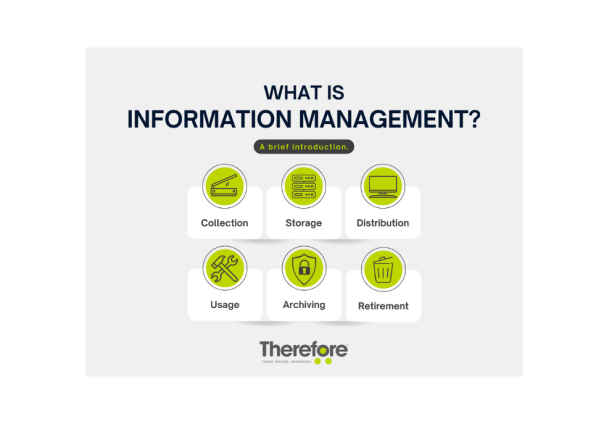What is Information Management?
02 August 2022
Information Management can make or break your organization. In business, being able to manage information as an asset is necessary to keep up with strong competition. When information is not being managed, it cannot be seen, let alone used.
Information Management in professional settings generally points to software solutions that can help your company use information as an asset.
Information Management can be broken down as the collection, storage, distribution, usage, archiving, and retirement of information.
This is a broad definition, so let’s look at some examples:
☺️ The creation of the Library of Alexandria was a smashing success of information collection, storage, retrieval, and distribution.
☹ The burning of the Library of Alexandria in 48 BCE was a failure of securing archived information.
☺️ Shredding a paper document is a success of information retirement.
☹ Not being able to find that document you need because it’s on your coworker’s local drive is a failure of information retrieval.
☺️ A well-designed eForm is a success of information collection.
☺️ A law firm holding client files for a mandatory retention period and then deleting is a success of information retirement.
☹ Forgetting where you just put your phone is a failure of information retrieval.
☺️ Quickly pulling up a client file is a success of information retrieval.
☺️ Utilizing a document to achieve a goal is a success of information usage.
Collection
information collected by an organization can originate internally or externally and can come in an infinite number of formats. Receiving paper documents from a client is an example of collection, but so would the process digitizing those paper documents through scanning solutions.
Storage
This point determines where information is stored for both safe keeping and quick retrieval. While paper documents should be expected to be filed away in a cabinet, electronic documents can be stored digitally. However, not all digital storage is the same. With large volumes of information, there need to be rules about where and how a document is stored. A document stored in a place where it is out of reach to others who may need it, or susceptible to being tampered with or destroyed, is not of much benefit to the company. However, a document that is stored securely and easily accessible can work as an asset to an individual or team.a
Distribution
Distribution covers retrieval. Distribution can be anything from printing out a digital document to give to an end-user, or giving users access to the digital document. Role-based access can be a huge concern for many businesses, especially those that place a high value on security, and should be a strong capability of any worthwhile Information Management software.
Distribution also encompasses how easy it is to search for and find a file or document. If information is hard to find, it might as well be useless. This is the backbone of Information Management.
Usage
Usage pertains to how the information is being used. Sophisticated information management software will take this a step further and automate some repetitive tasks via workflows.
Archiving
Archiving denotes when information is no longer needed readily but may still need to be securely stored to be compliant with certain regulations. For example, a school may be required by law to hold alumni transcripts for 10 years before they can be retired.
Retirement
Just like some documents legally need to be retained in an archive, many regulations require documents be retired (aka permanently destroyed) after a certain period. Certain laws and regulations may require that an organization retire information after a period of time, in order to protect an individual’s privacy.
Conclusion
Information Management can be difficult without a software designed to handle the challenges. A sophisticated Information Management software like Therefore™ can make businesses competitive by:
- Helping them better manage information as an asset
- Securely storing information
- Making information easy to find
- Putting it to work via workflows
- Helping companies maintain regulatory compliance
- And more!